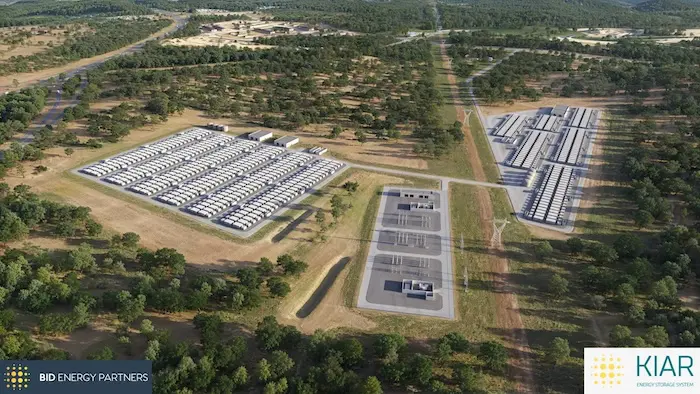
A groundbreaking proposal for a massive four-gigawatt-hour battery, the largest of its kind in Australia, has been unveiled for a site north of Sydney. This ambitious project, spearheaded by Australian developers Bid Energy, aims to capture excess solar power and bolster the nation’s renewable energy infrastructure.
The Kiar battery, boasting a capacity of 1,000 megawatts and 4,000 megawatt-hours, is strategically planned next to a coal mine along the main 330 kV transmission line connecting Sydney to the soon-to-be-retired coal-fired power stations on the central coast. This project dwarfs the 700 MW, 2,800 MWh Eraring battery currently under construction, positioning itself as a crucial component in the transition from coal to renewable energy sources.
Strategic Positioning and Timing
According to Bid Energy director Ben Bolot, the Kiar site was selected for its advantageous location on the transmission system, particularly as coal plants are phased out and new Renewable Energy Zones and the Hunter Transmission Line come online. “There is definitely a time imperative in moving projects forward as quickly as possible,” Bolot emphasized, highlighting the risks of delays in storage and generation projects.
Bolot praised the New South Wales Government for its proactive approach in expediting the approvals process while balancing environmental and social considerations. The Kiar battery is just one of several significant battery energy storage systems (BESS) poised to replace coal generators in the region.
Emerging Challenges and Adaptations
Just 10 kilometers northeast of the proposed Kiar site is the Waratah super battery, currently Australia’s most powerful storage facility at 850 MW, 1,680 MWh, which is nearing commissioning. This facility acts as a stabilizing force for the grid. Meanwhile, Origin Energy’s Eraring battery is located approximately 15 kilometers to the north.
The Kiar project has entered the federal environmental approvals process and is at the initial stages of New South Wales planning. However, the clustering of storage projects raises concerns about potential battery curtailment, a topic gaining traction at industry conferences. Bolot acknowledges this risk but remains optimistic that business models will evolve to manage storage and discharge efficiently.
“There are a range of other projects proposed for the general region, but we believe that over time, asset owners will manage storage and discharge to optimize returns and limit network constraints,” Bolot stated.
Future Prospects and Market Impact
Bid Energy aims to commence construction in 2026, with operations expected to begin by late 2027. This timeline aligns with the anticipated closure of the Eraring power station, although it may continue operations until early 2029, contingent on market conditions. The scoping report for the Kiar battery underscores the essential role of BESS assets in maintaining grid stability as coal generation phases out by 2040.
“BESS assets like the Project are essential to the future operation of the electricity grid, providing the ability to ‘firm’ intermittent VRE generators and store this energy for later flexible dispatch,” the report states.
The primary objective of the Kiar battery is to absorb surplus solar energy during midday and release it during peak demand periods in the morning and afternoon. Additionally, the project will offer market ancillary services, such as frequency control, enhancing the electricity network’s reliability for consumers and businesses.
Environmental Considerations and Site Development
The proposed development area spans 110 hectares, with approximately 40 hectares allocated for the battery, transmission line connection, and access road. The site must avoid flood-prone areas and those susceptible to subsidence, given its proximity to a coal mine owned by Wyong Coal.
As the project progresses, Bid Energy remains committed to navigating these challenges while contributing to Australia’s renewable energy future. The Kiar battery represents a significant step towards a sustainable energy landscape, aligning with national goals to reduce reliance on fossil fuels.
For ongoing updates on clean energy developments, subscribe to our free daily newsletter.







